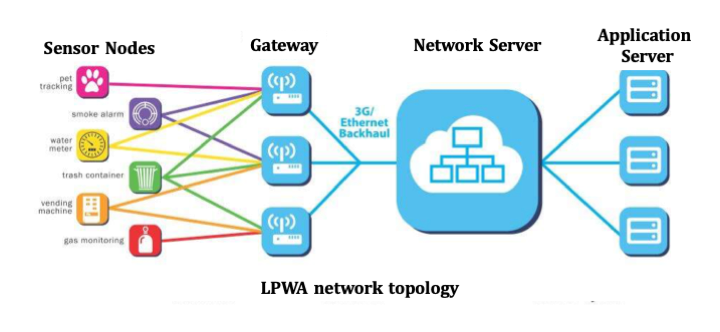Importance of Low power and Long range network infrastructure for sharing sensor and controller data sharing tech for the Internet of Things
The number of Internet of Things devices is rapidly growing on a global scale. The most recent estimates assume that by 2020 there will be over 30 billion connected devices. Currently used communication technology will impact on the scalability and energy efficiency of the devices, with reflections on the type of technology used to gain connectivity towards the IoT network concentrator (or gateway). LPWA Network (Low Power and long range network) is a long-range, low-power, low-bitrate, wireless communications system, promoted as an infrastructure solution for the Internet of Things. End-devices use LPWAN across a single wireless hop to communicate to the gateway’s, connected to the Internet. Which act as transparent bridges and relay messages between these end-devices and a central network server.

Figure 1: LPWA Network Topology
Connectivity for IoT Using Low Power and long range network
The LPWAN physical layer developed for allows long-range communications using low-power devices and requiring very low bandwidth. LPWAN is instead a protocol that allows multiple IoT endpoints to communicate with a gateway using LPWAN technology. The typical structure of an LPWA network topology, with the presence of three different types of devices, as shown in the below Figure 1.
The paper “Investigation of communication networking protocol for UECS using IM920 and its validity” provides an extensive idea of LPWAN and an in-depth analysis of its functional components. The physical and data link layer performance is evaluated by field tests and simulations. Based on the analysis and evaluations, some possible solutions for performance enhancements are proposed by the author.